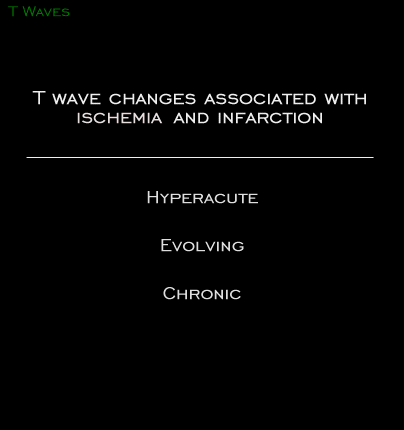
Thus far, we have considered the changes in the ST segment and the QRS complex that are associated with acute ischemia and infarction. Myocardial ischemia and infarction are also associated with changes in the T wave that fall into three categories: hyperacute, evolving and chronic.
